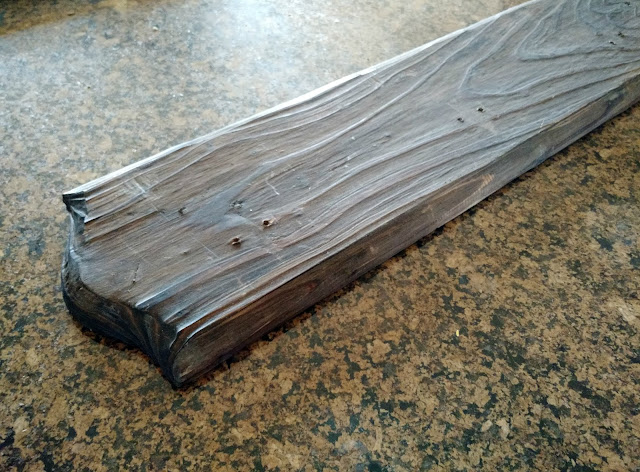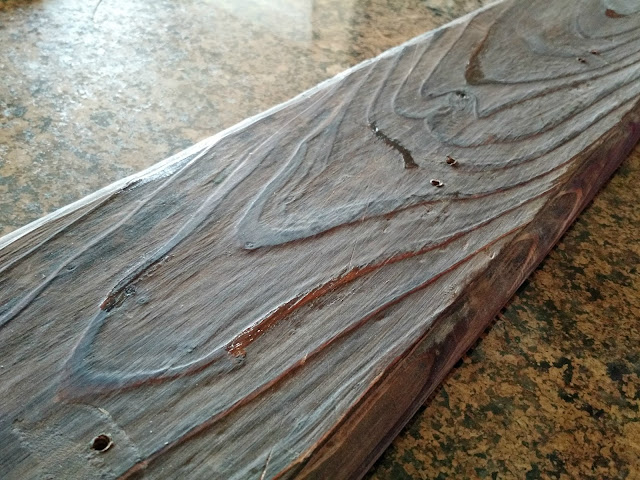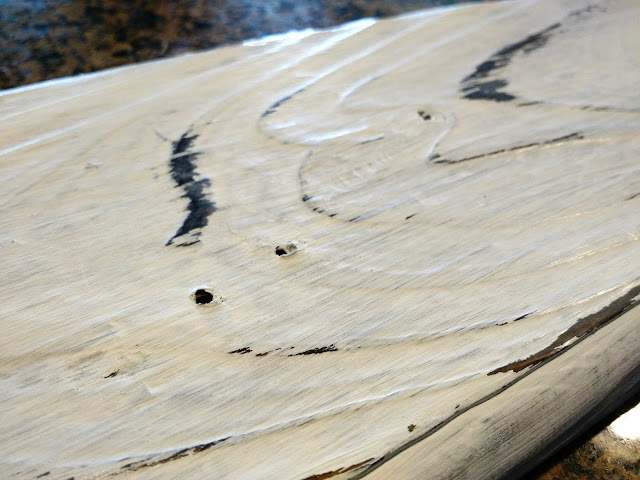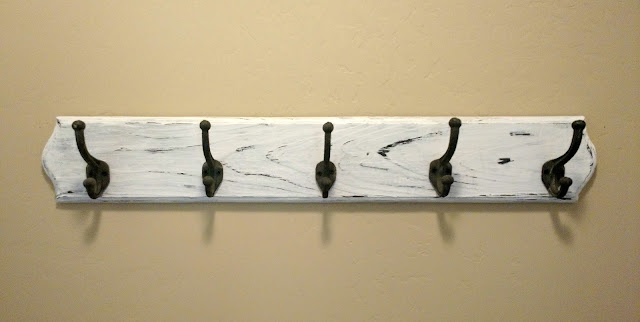Here is a picture of what the wood looked like before I did anything to it. I unscrewed the hooks and set them and the screws aside. There was a very thin coat of varnish and it was matte so I didn't worry about sanding it.
The next step is to get some petroleum jelly (vaseline). This is what you will use to distress your wood, or make it look weathered. The reason this works is because the paint will not stick to the jelly.
The keys to distressing are:
- Look at the direction of the wood grain and think about where the paint would naturally rub or peel off.
- Apply the petroleum jelly in the same direction as the grain.
- Apply it on the edges, corners or raised areas of the wood.
- Be random about where you put it.
I applied two coats of paint because I wanted a little bit of the grain and some color to come through, but it's really a matter of personal preference.
After your paint has dried, you'll be able to see the places where you applied the jelly because they will be lighter and look more shiny and wet.
Next, get a paper towel or napkin and fold it up so it is 2-3 layers thick. Rub the spots where the jelly is and the paint will start to flake off.
And...voila! You've distressed your wood without having to use any stain or sandpaper. Much less time consuming and messy. You can even use this technique on multiple layers of paint. Just make sure you let each layer dry completely before applying the petroleum jelly.
I hope you find something to distress soon! Let me know how you liked using this technique!




























No comments